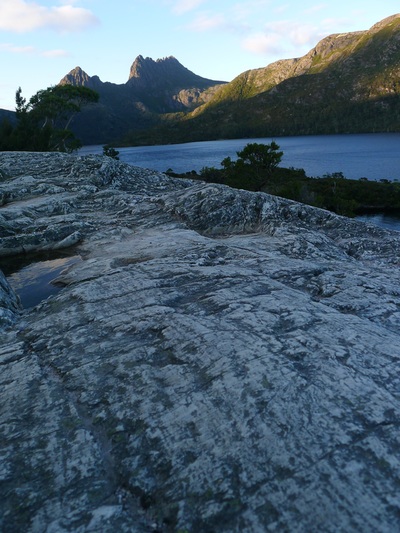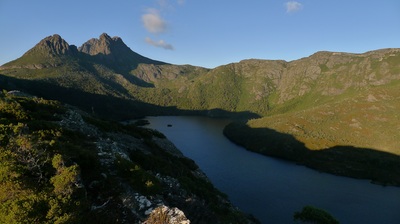0 Comments
 Our session at EuroScience Open Forum (ESOF) 2016 was just added to the program! I am excited to be part of a stellar group of scientists and science communicators who submitted this session. It was a competitive process and our session, Exit Stage Left: science debate as theatre, was accepted to be part of this pan-European science conference. Our session will run on July 27, 2016 at the Manchester Central Convention Complex. Are you in the UK or planning to be in Manchester this summer? If so, considering attending the ESOF 2016. This exciting forum takes place in Manchester, July 23-27th. Click here for more information about ESOF 2016. What is ESOF?  At the Ice Core Young Scientists workshop in March 2016. Hobart, Tasmania. Photo Credit: IPICS 2016 At the Ice Core Young Scientists workshop in March 2016. Hobart, Tasmania. Photo Credit: IPICS 2016 The fun science adventures continue! I am just back from an productive and fun trip to Tasmania where I attended the International Partnerships in Ice Core Sciences open meeting. The meeting was held in Hobart, Tasmania, a fantastic city that reminded me of my former home in Wellington, New Zealand. In addition to presenting research from work at Lake Ohau, New Zealand, I lead an invited science communication session at the Ice Core Young Scientists (ICYS) workshop. The workshop focused primarily on science communication theory and some best practices. This workshop highlighted my work in the Science in Society research group at Victoria University of Wellington. Dr. Rhian Salmon and I co-taught a similar workshop at two NASA Science Communication courses held in August and September, 2015. Below is a suggested reading list that I encourage participants (and every science communicator) to read. This is list was compiled by Rhian Salmon and myself. Please note, as with any active field of research, the theory, best practices and publications are constantly evolving. I will aim to update this list periodically. Have any suggestions of content to add? Contact me! As with any good trip, you have to take some photos! Here are a few highlights of the IPICS meeting (and some post-meeting adventures).
The Taylor Glacier field team is back from a successful season working in Antarctica! Our work was featured in two NASA blogs, which you can find here (the below images are snapshots):
http://climate.nasa.gov/blog/2369 and http://climate.nasa.gov/blog/2396 Thank you Laura Fay Tenenbaum for the fun, productive interviews from the field! You can also catch up on our season (and past seasons) on the University of Rochester Ice Lab Blog: https://rochestericelab.wordpress.com/. We're back from Taylor Glacier! After an incredibly successful and fun season, I am glad to be back home in Rochester. The last few weeks are marked by the bittersweet emotions of leaving Antarctica and saying "see you later" to our great field family. After parting ways, Peter and I headed to Wellington where we were able to spend time with our amazing New Zealand family & friends. Time in our old stomping grounds was a great way to transition back to life after field work. Once back in the U.S. we had a whirlwind trip in Wisconsin to collect our sweet dog, Kuna. Reunited, we drove back to Rochester, NY. Upon our return I even managed to squeeze in a trip to Long Island and a visit to Memphis to celebrate my grandmothers 90th birthday! Our recent travel itinerary, which includes helicopters, C-130 Hercules cargo planes and a few Airbuses, was quite a way to start off 2016!
I will end this three-week whirlwind with a visit to Naples, FL. Then, in a month, it is time to pack our bags to head to Hobart, Tasmania for the International Partnerships in Ice Core Sciences (IPICS) Open Science Conference. The whole University of Rochester crew, and many of the Taylor Glacier field team will be there. I will be presenting a poster on my research from New Zealand and will be running a workshop session on science communication. Time to rest up and recover before the traveling begins again. November 22, 2015 2015-2016 Taylor Glacier Camp
Last minute research trip to Taylor Glacier, Antarctica: In early November I was asked to participate in a research project in Antarctica! I will now be spending November (2015) - January (2016) on Taylor Glacier as a Research Associate with the University of Rochester (UR). This research is part of a National Science Foundation grant led by Dr. Vas Petrenko (UR). We will be sampling large ice cores to extract the ancient atmosphere preserved in the bubbles in the ice. These bubbles contain methane which we will analyze for the carbon-14 isotope. Carbon-14 of methane can help us to identify the source(s) of greenhouse gases during past climate events (glacial/interglacial cycles) and to understand modern methane in a warming climate. You can follow the journey here: https://rochestericelab.wordpress.com/. NOTE: The UR blog will not be updated daily due to limited access to email on Taylor Glacier. During the field season we only have access to satellite phones (yes, that means no internet (or showers!)) so most communications will be relayed over radio or phone to McMurdo Station, the main U.S. base in the Ross Sea sector of Antarctica. |
Heidi A. RoopScientist. Educator. Communicator. |




























 RSS Feed
RSS Feed